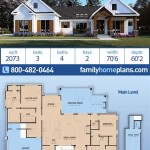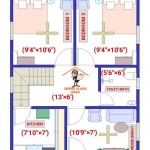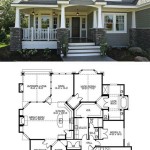Floor Plans for Log Cabin Homes: A Guide to Designing Your Dream Retreat
Log cabin homes evoke a sense of rustic charm and cozy comfort. Their distinctive aesthetic and sustainable construction make them a desirable choice for those seeking a connection with nature. While the exterior of a log cabin is often the first thing to catch the eye, the interior layout and floor plan are equally important. A well-designed floor plan maximizes space, functionality, and the overall living experience. Here's a guide to exploring various floor plan options for log cabin homes, from cozy one-bedroom retreats to spacious multi-level designs.
Open-Concept Living: Embracing Connected Spaces
Open-concept floor plans are gaining popularity in log cabins, creating a sense of airy spaciousness and allowing light to flow freely. By removing walls between the living room, kitchen, and dining area, these designs foster a sense of togetherness and encourage interaction. This layout is ideal for entertaining and maximizing natural light. The open space can easily accommodate furniture arrangements, allowing for flexible use and multiple seating areas. For smaller log cabins, open-concept design can make the space feel larger and more welcoming.
Traditional Layout: A Classic Approach
Traditional log cabin floor plans often feature a more compartmentalized layout, with separate rooms for living, dining, and sleeping. This approach provides well-defined spaces for different activities, offering privacy and quiet when desired. The layout typically features a central living space with a fireplace, a separate kitchen, bedrooms, and bathrooms. This design is particularly suitable for families who value defined areas for each member's activities. The traditional layout also provides flexibility for customization according to individual needs and preferences.
Multi-Level Designs: Maximizing Vertical Space
For larger log cabins, multi-level designs offer the advantage of creating more living space without spreading out horizontally. A second story can be used for bedrooms, a master suite, or even an additional living area. The use of stairs adds a sense of grandeur and creates different levels of intimacy within the home. A loft space can be incorporated into the design, providing a versatile area for a home office, reading nook, or children's play area. Multi-level designs are well-suited for sloping or uneven lots, allowing for a more efficient use of the available land.
Key Points to Consider When Choosing a Floor Plan
Beyond the basic layout, several key points should be considered when choosing a log cabin floor plan:
1. Lifestyle and Needs:
The floor plan should reflect the intended use of the cabin. A cabin for weekend getaways will have different needs than a full-time residence. Consider how many people will be living in the cabin, their ages, and their activities. If you plan to entertain regularly, an open-concept design may be ideal, while a family with young children might prefer defined bedrooms and play areas. Think about the layout that will best suit your lifestyle and family dynamics.
2. Site and Orientation:
The site of the log cabin should influence the floor plan. Consider the views, sunlight exposure, and the shape of the lot. A floor plan that maximizes the views and takes advantage of natural light will be more enjoyable. The lot's slope can also determine the best layout, with multi-level designs often being more suitable for uneven terrain.
3. Budget and Construction Costs:
The cost of building a log cabin varies depending on the size and complexity of the floor plan. A smaller, simpler design will naturally be more affordable than a larger, multi-storey structure. Factor in the costs of materials, labor, and any specialized design features. Consult with an architect or builder to get a realistic estimate of the construction cost.
4. Energy Efficiency Considerations:
Log cabins are inherently energy-efficient due to the natural insulation properties of wood. However, the floor plan can influence the overall energy performance. Consider utilizing passive solar design principles, such as south-facing windows to maximize natural light and heat during the winter months. Proper insulation and airtight construction will also contribute to a cozy and energy-efficient living space.
5. Exterior Design and Integration with Nature:
The floor plan should complement the exterior design and the surrounding environment. Large windows and verandahs can create a seamless connection between the interior and the outdoors, allowing residents to enjoy natural beauty views. The layout can be designed to create a sense of harmony with the surrounding landscape.
By carefully considering these factors, you can choose a floor plan that not only meets your practical needs but also enhances the rustic charm and cozy comfort of your log cabin home. The right floor plan will transform your dream retreat into a space where you can create lasting memories and fully enjoy the connection with nature that log cabins offer.

Log Cabin Floor Plans Many To Choose From

10 Bedroom Log Cabin Floor Plans Ideas House Home

Cabin Floor Plan Log Home Plans Living House

Small Log Homes Kits Southland

Browse Floor Plans For Our Custom Log Cabin Homes House Home

Log Cabin Floor Plans Kintner Modular Home Builder Pennsylvania Quality Prefab Contractor

Pin On Home Plans

Standout Log Cabin Plans Escape To An Earlier Gentler Time

Log Home Floor Plans Engineering Custom Blueprints

12 Customizable Log Cabin Floor Plans For Your Future Build Hub








